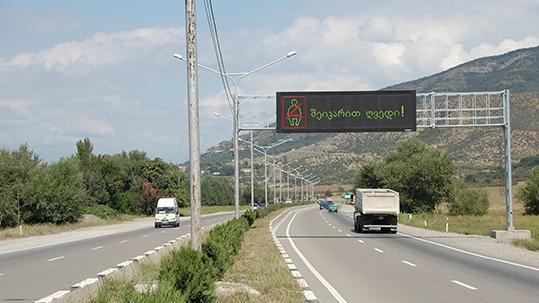September 10, 2009 — The East-West Highway is part of historic Silk Road, and allows for transit flows connecting European, American, African and Mediterranean trade with Caucasian and Central Asian regions. Georgia 's old and only East-West artery consists of two lanes of often narrow and winding roads. A major trade route, i t carries over 60 percent of the total foreign trade that uses the road network in Georgia .
However, the long transit times despite the relatively short distances, and poor road conditions, slow traffic and increase transport costs. There is also a high risk of traffic crashes.
Until now. The road is being upgraded to a new four lane concrete highway that will move people and goods safely and quickly from Black Sea ports to borders with Armenia and Azerbaijan and is the bridge to Georgia 's future. Improving roads promotes trade, reduces poverty and is Georgia 's top priority. Georgia is investing large sums to improve its highways to become a more attractive transit country for goods. At the same time, it is upgrading secondary roads to improve the lives of all Georgians.
In response to the Government's request in 2006, the Bank has supported a series of highway upgrading projects. The Third East West Highway Program significantly scales up Bank support to Georgia in the roads sector. It builds upon the US$19 million First East-West Highway Improvement Project that started in 2006, the Second US$35 million East-West Highway Improvement Project, and US$20 million in additional financing in 2008. These efforts are part of a larger roads program that also includes financing for US$ 90 million of investments in Secondary and Local Roads.

